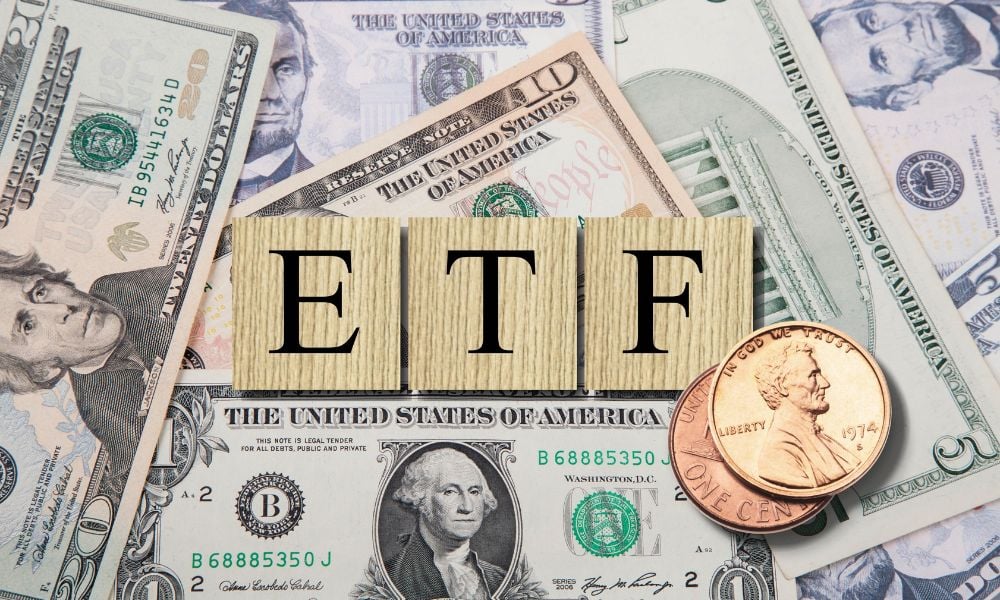

Jack Bogle may have envisioned a world of rock-bottom fees and sleepy index funds — but the ETF market in 2025 looks more like a speculative arcade than a cost-cutting utopia.
The average fee of an exchange-traded fund launched this year has surged to a record 65 basis points, with leveraged trades, cryptocurrency, and active management among the slew of nearly 350 new offerings, according to a Bloomberg Intelligence analysis.
That means an investor putting $1,000 to work in an ETF would have to pay $6.50 in annual fees — that’s up from last year’s average of under $6 and $4 in 2017.
Paradoxically, the all-time high costs can be linked back to the race toward lower fees among the highest ranks of the ETF league tables. Fund giants like the Bogle-founded Vanguard Group, BlackRock Inc. and State Street Corp. have spent years slashing fees, or expense ratios, on their index-tracking, core portfolio funds to near zero, in an effort to attract new investors.
But as the so-called Vanguard Effect has lowered fees for investors, it in turn has given them the resources to allocate a slice of their portfolios to more expensive, niche funds.
“The scale and efficiency of ultra-low-cost products have helped subsidize the expansion of higher-fee offerings elsewhere, supporting broader innovation and diversification across the ETF landscape,” wrote Bloomberg Intelligence’s Athanasios Psarofagis, in a research note. “As the ETF market matures, issuers are increasingly seeking higher-margin products to bolster profitability.”
Among the freshly minted options this year include: the T-REX 2X Long GME Daily Target ETF, which provides 200% of the daily returns of GameStop Corp. with a 1.5% expense ratio, a fund that provides two times the daily price performance of the XRP crypto token charging 189 basis points and a catastrophe bond ETF at 1.58%.
For asset managers operating in an already low-margin business, the opportunities for profits are now mostly in offerings that use active management, complex strategies and leverage. Assets in single-stock leveraged ETFs, for example, have climbed to a record $22 billion as of mid-May, according to BI data.
The new funds are also “emblematic of the hard right turn we’ve seen,” in a market that’s home to over 4,000 ETFs, says Ben Johnson, head of client solutions at Morningstar Inc., adding that there’s essentially no more room for new equity-index funds.
Despite how expensive new ETFs have gotten, when looking across all funds in total asset terms, investors are still paying less. The average asset-weighted expense ratio is falling and hovering around its lowest level on record, according to data compiled by BI. That ratio for all US ETFs is 17.5 basis points, down from roughly 23 basis points just nine years ago.
In fact, over half of total ETF assets are held in funds that charge 10 basis points or less.
So marks the new phase of the ETF market, whether or not Bogle would have envisioned it. As index behemoths notch new flow records, investors plow unprecedented levels of cash into pricier leveraged, single-stock ETFs.

Carson has fully acquired another firm in Florida, while Simon Quick Advisors finds its third perfect-fit partner in a Las Vegas-based boutique.

FINRA has been focused on firms and their use of social media for several years.

The model has surged in popularity thanks to its fiduciary appeal, but the show is far from over for no-fee and commission-based arrangements.

Asset managers filing to launch dual share-class mutual funds, creating an ETF sleeve for existing strategies, could end up eroding key benefits of the wrapper.

The two wealth tech firms are continuing to expand their reach among firms as they support advisor productivity and client data protection.
How intelliflo aims to solve advisors' top tech headaches—without sacrificing the personal touch clients crave
From direct lending to asset-based finance to commercial real estate debt.
